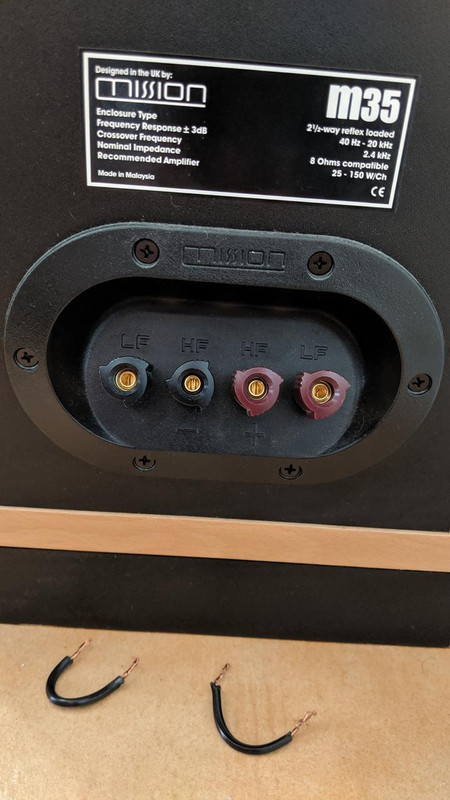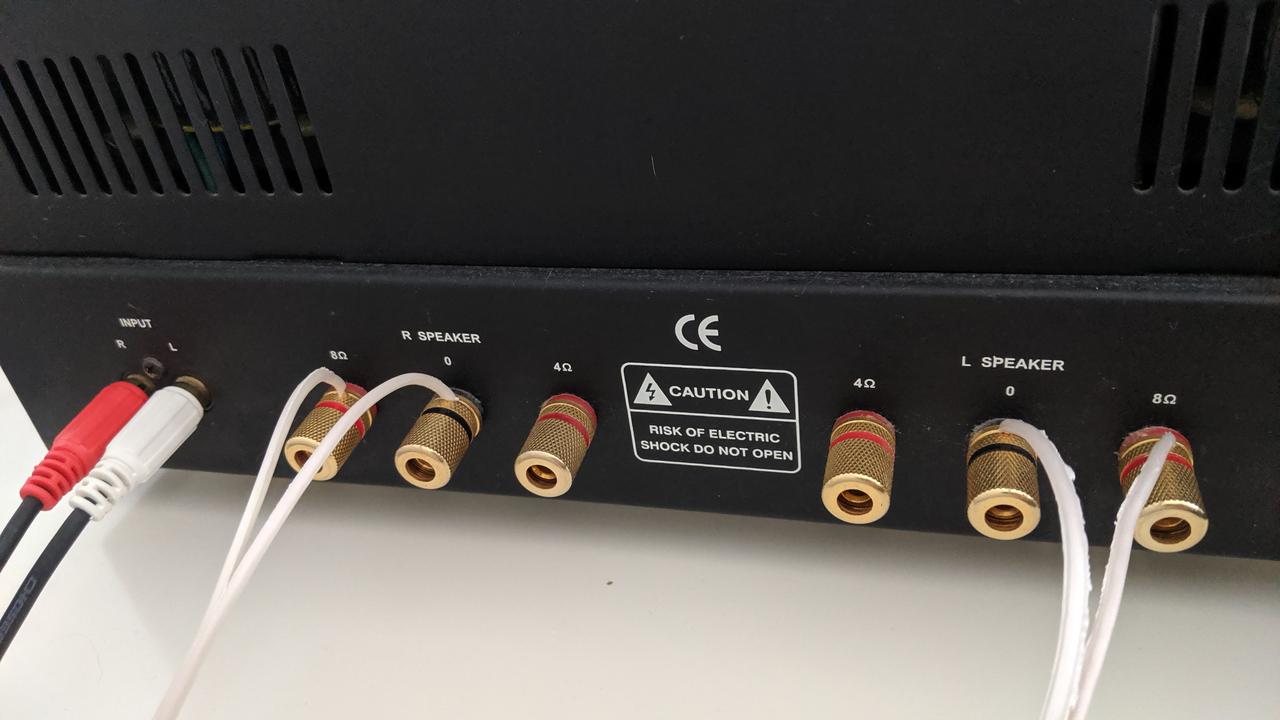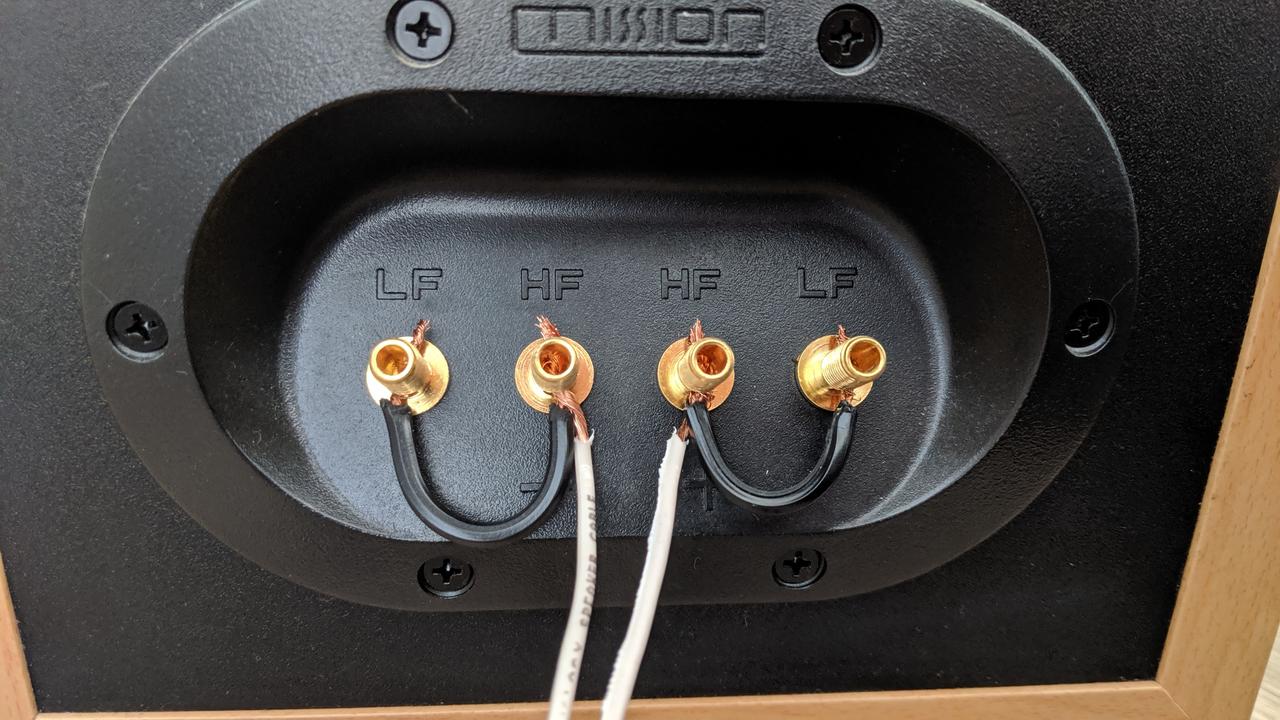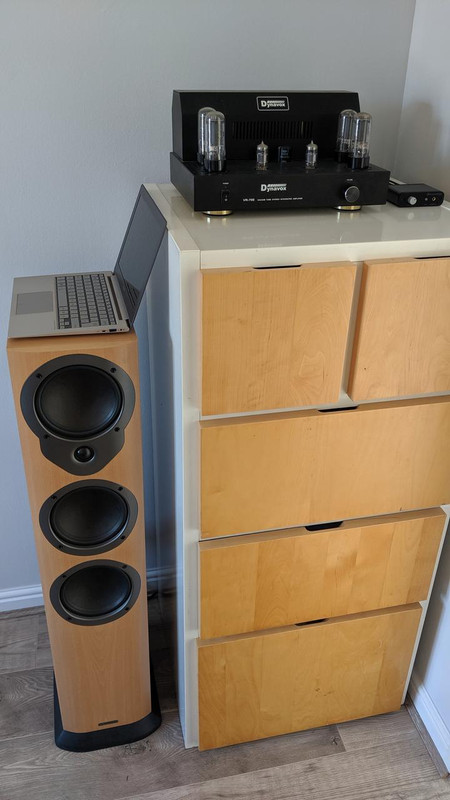Hi folks,
I decided to take my first steps into a bit of hifi audio. I'm getting made redundant next month so I'm wasting money instead of saving Figured I'll have some downtime while I hunt for the next job and it would be nice to relax to some music.
Figured I'll have some downtime while I hunt for the next job and it would be nice to relax to some music.
I've picked up an old stereo valve amplifier (Dynavox VR-70E) and a pair of Mission M35 floor standing speakers. I have an Audioengine D1 DAC in a cupboard being unused, so the plan is to have it feed the amp via a laptop which is where the music will live. I've purchased a few meters of QED Micro speaker cable, it was getting good reviews and was cheap.
All was well until I looked at the back of the speakers and I got a bit confused:

The previous owner had these little wires in the photo above, one connected to both black terminals and one connected to both red terminals.
Did some quick Googling and I understand now that four terminals on a single speaker are for the purposes of bi-wiring which may (or may not) improve audio quality.
However the back of my amp looks like this:

I've gone for the 8 ohm option instead of 4 ohm simply because the back of the speakers say "8 ohms compatible". I assume this is correct?
Anyways my main question was, am I ok to wire each of speakers like this:

Thanks in advance!
I decided to take my first steps into a bit of hifi audio. I'm getting made redundant next month so I'm wasting money instead of saving
 Figured I'll have some downtime while I hunt for the next job and it would be nice to relax to some music.
Figured I'll have some downtime while I hunt for the next job and it would be nice to relax to some music.I've picked up an old stereo valve amplifier (Dynavox VR-70E) and a pair of Mission M35 floor standing speakers. I have an Audioengine D1 DAC in a cupboard being unused, so the plan is to have it feed the amp via a laptop which is where the music will live. I've purchased a few meters of QED Micro speaker cable, it was getting good reviews and was cheap.
All was well until I looked at the back of the speakers and I got a bit confused:

The previous owner had these little wires in the photo above, one connected to both black terminals and one connected to both red terminals.
Did some quick Googling and I understand now that four terminals on a single speaker are for the purposes of bi-wiring which may (or may not) improve audio quality.
However the back of my amp looks like this:

I've gone for the 8 ohm option instead of 4 ohm simply because the back of the speakers say "8 ohms compatible". I assume this is correct?
Anyways my main question was, am I ok to wire each of speakers like this:

Thanks in advance!





